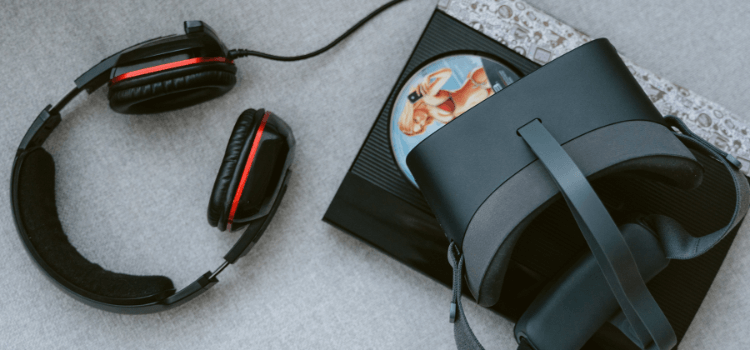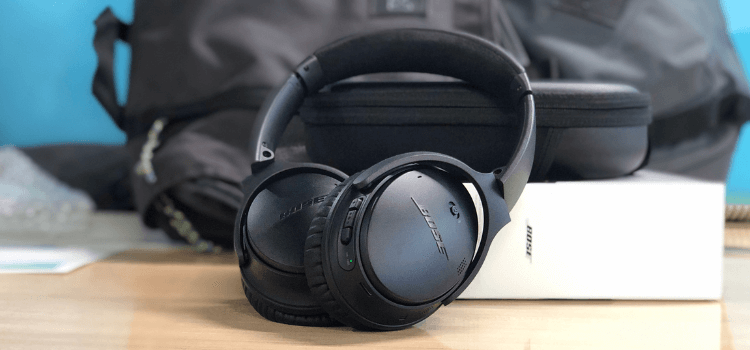As an Amazon Associate I earn from qualifying purchases.
Are you blown off feel audio curb while treating your wired headphones? It can be frustrating when you’re enjoying your favorite song or watching a movie, only to have the sound suddenly cut out. Don’t think, you’re not alone in these issues. Many people have encountered the same issue and wondered why it happened. In this blog post, we will explore the possible reasons behind your wired headphones cutting out and provide some solutions to help you fix the problem. So, let’s dip in and search out how could be causing this boring problem!

Why do my wired headphones keep cutting out
Say Goodbye to Frustrating Audio Interruptions! The frustration of experiencing audio interruptions is common. In this article, study Why Your Wired Headphones Repose Cutting Out. We will analyze practical solutions to provide an uninterrupted audio experience. We recommended your top reason for cutting out your wired headphones.
Check the headphone connection.
This is the primary move in troubleshooting why your wired headphones keep cutting out. It may be a loose connection issue. Please make sure the headphone plug is securely inserted into your audio jack. You can also plug the headphones into another audio jack and see if it pushes the problem.
If the link is tight and pushes the issue, there may be an issue with the headphone jack. Over time, the jack can become worn out or damaged, leading to intermittent sound interruptions. For this reason, you may need to repair or replace the headphone navigator.
Clean the headphone jack.
If you are experiencing audio issues with your wired headphones, it may be worth checking and cleaning the headphone jack. Over time, mote, dirt, and debris can pile up in the jack and meddle with the link. This can result in poor audio quality and intermittent or no sound.
You can use a short, soft-bristled brush or a cotton wipe to clean the headphone jack. Could you gently insert the brush or swab into the jack and carefully remove any debris? Avoid using any sharp or abrasive objects that could damage the jack. You can also use narrow air to blow out any dust or fragments.

Look for any damage or fraying in the headphone cable
When using headphones, it’s necessary to regularly review the cable for any signs of injury or daunt. This can help check any potential problem with sound quality or the overall functionality of the headphones. By examining the cable, you can identify areas needing repair or replacement. It’s recommended to carefully check the entire length of the cable, paying close attention to areas near the connectors or any points where the cable may be frequently bent or twisted. If you see any injury or daunt, it’s best to address it immediately to avoid further complications. You may consider contacting the manufacturer or seeking professional assistance to repair or replace the cable if necessary. Taking these precautions ensures a longer lifespan for your headphones and provides you with uninterrupted, high-quality audio experiences.
Check for audio settings issues.
Some settings may need to be adjusted if you are experiencing audio issues with your device. Start by checking the volume settings on your instrument and confirm that it is not muted or set to a not-deep level. Additionally, check if any specific audio settings or enhancements are enabled that may affect the sound quality.
You can enter this setting by your instrument control panel or menu. If you use headphones or strange speakers, confirm they are rightly linked and functioning exactly. If the problem pushes, updating your audio drivers or seeking support from a tech professional to diagnose and resolve the matter may be helpful.
Test the headphones on another device.
Trying your headphones on another device is a good idea if you are having a problem with your headphones. This will help you determine if the issue is with the headphones or the instrument you use. To do this, plug the headphones into different devices, such as a smartphone or laptop, and play some audio. If the headphones act fine on the other device, the problem keeps with your main device.
You can then try troubleshooting the audio settings on that device or seek further assistance. However, if the headphones still do not work correctly on the alternate device, then it is likely that the headphones themselves are faulty and may need to be repaired or replaced. Testing the headphones on another device is a simple and effective way to identify the source of the problem and find a solution.

Check for software or driver updates.
If you are experiencing any issues with your headphones, one possible solution is to check for software or driver updates. These updates may take on failing fixes or benefits that can solve compatibility issues or other matters with your headphones. To check for updates, you can go to the website of the manufacturer of your headphones or the device you are using them with.
Look for a help or downloads department where you can find any gainable updates for your appointed model. It’s essential to check for updates regularly, as manufacturers often release new versions to address any reported issues or enhance the functionality of their products.
Remember that updating software or drivers can sometimes be a complex process, so it’s advisable to follow the instructions provided by the manufacturer or seek assistance if needed. By orderly searching for updates, you can confirm that you have installed the latest software or drivers and resolve any problems you may be experiencing with your headphones.
Try using a different pair of headphones
When using headphones, it’s necessary to orderly review the cable for any signs of injury or daunt. This can favor checking any strong issues with sound quality or the overall functionality of the headphones. By examining the cable, you can identify areas needing repair or replacement. It’s recommended to carefully check the entire length of the cable, paying close attention to areas near the connectors or any points where the cable may be frequently bent or twisted.
If you notice any injury or daunt, it’s best to address it immediately to avoid further complications. You may consider contacting the manufacturer or seeking professional assistance to repair or replace the cable if necessary. Taking these precautions ensures a longer lifespan for your headphones and provides you with uninterrupted, high-quality audio experiences.

Replace the headphones if necessary.
If you have tried troubleshooting your headphones and they still don’t work correctly, it may be time to consider replacing them. Over time, headphones can be taken out or become injured, command to poor sound quality, connectivity issues, or physical injury like daunt wires. If you have tried all other solutions and the issues push, the headphones are likely the problem.
In this case, looking for a new pair that meets your needs and preferences is best. Consider factors such as sound quality, pleasure, stability, and any appointed model or functionalities you want. A wide range of headphones is available on the market, so take your time researching and choosing the best option. Remember also to consider your budget when purchasing new headphones. Spend on a high-quality pair can give the best audio experience and longer-lasting performance.
Conclusion
Ensuring a Seamless Audio Experience
In the quest for a flawless audio experience, addressing the above factors can significantly mitigate the cutting out of wired headphones. From regular maintenance to advanced troubleshooting, a proactive approach will enhance your headphones’ longevity and provide an uninterrupted audio journey.
Remember, the key stand in understanding the shade of wired audio technology and completing the correct answer. By staying informed and proactive, you can elevate your audio experience and leave the frustration of interruptions behind.
Amazon and the Amazon logo are trademarks of Amazon.com, Inc, or its affiliates.